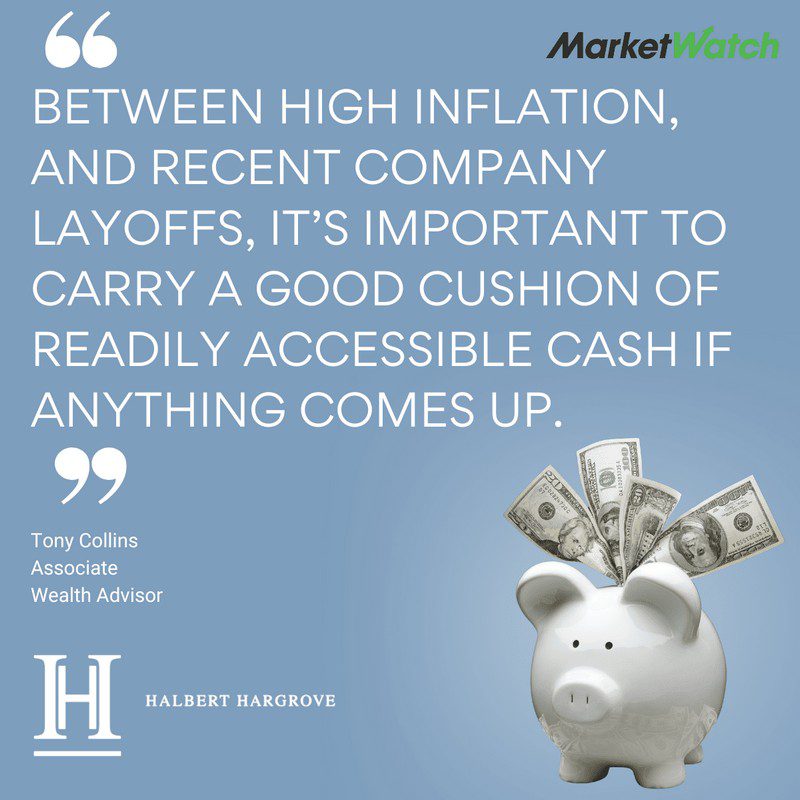By Andrew Shilling, GoBankingRates featuring Tony Collins, CFP®, AIF®, Associate Wealth Advisor at Halbert Hargrove
The IRS issued a total of roughly 96.3 million tax refunds to the tune of $292.5 billion in 2022, up from $270.3 billion in 2021. What’s more, the average American received a ,039 tax refund check last year, according to IRS data.
And this year, 55% of filers plan on a ,205 check.
So, what should you do with your tax refund? Tess Zigo, a financial adviser and certified public accountant with TruWealth Partners in Palm Harbor, Florida, says the first thing you should do is not trust your instincts. “The easiest thing to do is to just go out and spend it all,” Zigo says: “Don’t do that.” Here’s what to do instead.
1. Build an emergency savings fund
As many as 59% of filers this year say they plan to put their refund into personal, emergency or retirement savings accounts, the NerdWallet report found. And that’s just the place to start, says Tony Collins, a certified financial planner at Halbert Hargrove in Long Beach, California. “Between high inflation, and recent company layoffs, it’s important to carry a good cushion of readily accessible cash if anything comes up,” says Collins.
How much is enough? Matt Masterson, wealth advisor and director of financial planning with CI RegentAtlantic in Morristown, New Jersey, says your goal above all else should be to set aside 3% to 6% of your monthly expenses. “You want to make sure you have that emergency savings built up and that it’s paying you well,” Masterson says, adding that interest rates on savings accounts are “the highest we’ve seen in over a decade.”
Note that savings accounts with the best available interest rates these days can earn as much as 5% APY.
2. Pay off outstanding debt
While building your savings stands as the most popular plan for those tax refund checks, the National Retail Federation found nearly a third of consumers plan to pay down their debt with any returned cash this tax season.
Marianela Collado, a certified financial planner and CEO of Tobias Financial, says although they are best to be avoided (more on that below), “tax refunds present a really nice opportunity to catch up on things, whether that is paying down high interest debt, rebuilding emergency funds and securing your future,” adding that “if you have debt, that should be paid off first.”
3. Beef up your retirement plans
If you’ve built up a healthy savings account and your debt is paid, financial experts say the next step is to ensure your future plans are in order. The general rule of thumb, according to leading industry pros, is to allocate as much as 15% of your annual income to a retirement account, such as a 401(k) or IRA.
While this may not be possible for everyone, Zigo says any additional cash you may earn from your tax returns could very well help you achieve that goal.
“If you don’t need anything short term, you still have time to put money into a Roth IRA or IRA so that could be beneficial for some,” she says, adding that this is also a way to reduce your future tax obligations “if you’re doing a pretax IRA or you use the Roth IRA where you can create a tax free bucket in retirement.”
Just remember there are limits. For 401(k)s, 403(b)s, most 457 plans, and Thrift Savings Plans, the maximum annual contribution limit is $22,500, according to the IRS. The annual contribution limit for traditional and Roth IRAs this year is $6,500.
4. Consider I-bonds or Treasury bonds
The interest rate on I-bonds is 6.89% for bonds issued between Nov.
1, 2022 and April 30, 2023 — and that is a return that, while down from last year, is still worthwhile, says Alexandrovic. “They are linked to inflation so their yield should continue to increase if we see inflation do the same,” he explains. “If inflation remains at current levels, the yield should still remain relatively high compared to other types of bonds.”
There are, of course, a few things to be aware of, he adds. “You don’t earn any interest if you sell before holding the bond for one year, and you lose three months of interest payments if the bond is sold before five years.” However, if you have a time horizon longer than a year and want to protect against inflation, Alexandrovic adds that “they can be a great way to earn more interest than a traditional savings account.”
There are also limits on how much you can purchase. Individuals can buy up to $10,000 each calendar year from TreasuryDirect.gov, and you can also buy an additional $5,000 per year of paper bonds using your tax refund.
“I would caution clients to temper their expectations around future yields on I-bonds now that we’re seeing May measures of inflation rollover from 2022,” Alexandrovic says. “We’re also starting to see more data such as corporate earnings, consumer savings and jobless claims pick up, which increases the risk of a recession. In that environment, clients may want to consider using their refunds to purchase and lock in today’s higher rates with one- or two-year treasury bonds,” which, he adds, yields “just over 4%,” on a two-year note.
5. Invest in your future
If your emergency fund and other short-term obligations have been met, it may be a good idea to invest in the stock market, Collins suggests as an alternative option for that extra cash. “Markets have been volatile, and this is when prudent investors are looking to add to their investments,” he adds. “With a long time horizon, investment into growth-oriented assets should outpace both inflation and what can be earned just staying in a savings account.”


